Research
These short articles highlight the findings from ongoing scientific research within selected Marine Parks, including exciting new discoveries and ideas for future projects. If you are a scientist, read about how you can see your work featured in the Atlas.

Huon Marine Park displays multiple levels of seabed habitats from the large cluster of seamounts on the continental slope to low profile reefs and sediment plains on the continental shelf. It covers representative areas of four bioregions.
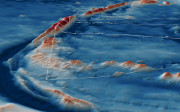
Macquarie Island Marine Park features both sanctuary and habitat protection zones offering the highest levels of protection to this unique sub-polar park. It covers representative areas of the Macquarie Island Province bioregion.

Franklin Marine Park is dominated by shelf unvegetated sediment habitat with high-profile deep reef features in the northern section. It covers representative areas of four bioregions. The northern section of the park contains complex reef likely formed by volcanic lava flows, which at its shallowest depths of 35m support kelp forests (Ecklonia radiata) - a rare habitat type in Australian Marine Parks.
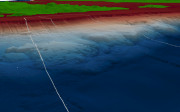
Freycinet Marine Park features sediment dominated shelf areas, a high-profile granite reef, and low profile reef ridges along the mid-shelf. All these habitats support a diverse array of invertebrate communities and fish assemblages. It covers representative areas of four bioregions.
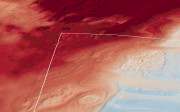
Apollo Marine Park contains sediment ecosystems, deep (mesophotic) reefs and a 5m high raised ridge feature, suspected to be deeper (rariphotic) reef habitat extending from the western park boundary to the northern park boundary1. The park covers representative areas of five bioregions.
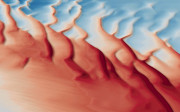
Boags Marine Park contains extensive mobile dune fields, likely dominated by crustaceans, polychaete worms and molluscs that live in and on sediments1. It covers representative areas of three bioregions. The southern third of the park has been mapped using fine scale multibeam 2.

East Gippsland Marine Park contains deep water habitats featuring large box canyons, ridges, margin slumps, and plateaus bordered by steep escarpments. It covers representative areas of the south-east transition bioregion.
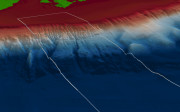
Flinders Marine Park contains soft sediment and hard substrate shelf areas, canyons, deep (mesophotic) reefs, and seamounts2. It covers representative areas of four bioregions.
Targeted biological surveys have revealed diverse benthic communities of hydrozoans, bryozoans, ascidians and sponges. Monitoring of these communities has been undertaken using Automated Underwater Vehicles (AUVs)3.
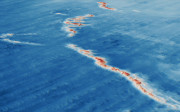
Beagle Marine Park contains an extensive area of soft sediment with some areas of rocky reef, which are likely to be a relict sand dune field prior to sea level rise. The park covers representative areas of three bioregions.

